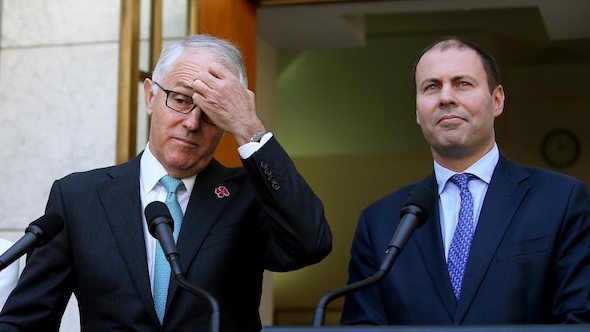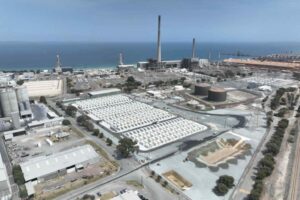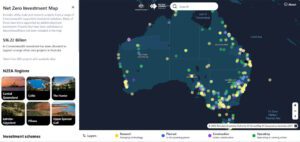The federal Coalition government has not budged on its weak emissions target for the electricity sector, the latest commonwealth paper on the National Energy Guarantee distributed to state and territory administrations on Tuesday night shows.
The 22-page Commonwealth document – titled the National Energy Guarantee, Final Detailed Design, Commonwealth Elements, July 2018 – was circulated to government officials after the Energy Security Board “final design” was leaked and published in full on RenewEconomy on Tuesday.
But the federal document, also obtained by RenewEconomy, shows no shifting at all in its much-criticised target of a 26 per cent reduction in electricity sector emissions by 2030, and a 10-year timeline that seeks to lock those targets in for the next decade.
As even the ESB document admits, this effectively means no target at all, because the construction of new wind and solar plants, and rooftop solar, under the current renewable energy target means the 26 per cent reduction will be met by 2021 or 2022.
Worse, the commonwealth paper says Australian offsets can be used for up to 5 per cent of the emissions, which effectively means that any energy retailers falling short can use offsets, such as planting trees – rather than investing in clean energy – to meet their obligations.
It has, at least, ruled out the use of international credits.
However, while it says the target will be reviewed in 2025 to set trajectories from 2031 on, it does indicate a potential review in 2024 “to ensure targets from 2025 to 2030 remain appropriate.”
This, though, seems to lock the target in by stealth.
“It is a farce and for all intents and purposes still locks in no action for a decade,” said Environment Victoria’s Erwin Jackson.
“It will just continue to strangle renewables investment for a decade. Is a Government going to give business six months notice for a significant change to the target? This is locking in a weak target by stealth.”
As for the government, it says: “(The National Energy Guarantee) is the first and best opportunity to integrate climate and energy policy to support investment in the right combination of resources.”
“Energy users and producers alike have recognised that the Guarantee represents the best
opportunity to break a decade-long impasse on energy policy.”
Those quoted in support of its meagre emissions target include Delta Energy (a coal generator), and the Business Council of Australia, which recently launched an extraordinary campaign against renewables. Rio Tinto is cited as supporting the 10-year lock in on targets.
The government then goes on to cite support from a range of other companies and lobby groups, including BHP, Bluescope and the likes of Origin and the National Farmers Federation.
State governments should not be fooled. Even the NFF have woken up to the implications of this weak electricity target on their sector (see more below), and the likes of Origin have urged higher emissions targets for electricity, and more regular reviews such as a three-year rolling target.
The commonwealth paper will do little to stop the criticism of the NEG. Even those who suggest that something might be better than nothing – and there are many who argue the opposite – were hoping there would be some movement on emissions.
But that is made impossible by the push-back from the right-wing elements of the party room, and strong opposition to the whole climate and clean energy thing from the National Party.
However, the pressure now falls on state government and territories, particularly the ACT government, at the August 10 CoAG meeting. Activists are seeking another state government, such as Victoria or Queensland, to vote against it.
Interestingly, it seems the timeline for the NEG has been quietly pushed back.
While high-level decisions and unanimous state and territory agreement on mechanism are still required at the August 10 COAG meeting, draft legislation for the National Electricity Law changes are now to be considered at a September COAG meeting.
It now appears that the legislative changes are not to be implemented until November-December, which is not surprising given the amount of time it would take to effectively re-write the rules of the NEL. But the commonwealth is now asking the states to effectively vote blind on laws that don’t pass the pub test.
The reaction from various stakeholders to the ESB document revealed on Tuesday was mostly centred on the lack of ambition in the emissions target, and many were dismissive of the modelling.
The NEG modelling claims, for instance, that savings to households could be more than $550 a year from the policy – a line amplified on the front page of the Australian Financial Review.
But the documents show quite clearly this increase – up from $400 a year previously cited – is a direct result of the increase in wind and solar generation, and its moderating impact on wholesale prices. This is all driven from the renewable energy target.
Dylan McConnell, from the Climate and Energy College, pointed out the huge discrepancy between the ESB modelling and the recent modelling by the Australian Energy Market Operator. It would be laughable if the stakes were not so high.
This first graph (above) is from the ESB modelling. Compared to the AEMO forecasts drawn by McConnell from its Integrated System Plan (below), the ESB appear to have ignored not just utility-scale solar, and some wind, but also the planned closure of the Vales Point coal generator in NSW.
ITK analyst David Leitch points out this and many other simple errors – not usually associated with such important documents – and the use of the “straw-man” arguments suggests there is a particular agenda afoot.
The Clean Energy Council said it wanted to see more work on the mechanics of the NEG, but re-iterated its concern that the low target would not encourage any new renewable energy investment.
But it said it was broadly happy with the framework, apart from a few issues, and as long as it could be ratcheted up in the future. And if international offsets were not allowed.
“With the policy architecture settled, it would be easier to increase the emissions target in the future,” CEO Kane Thornton said. But this also depended on the ability to have flexibility in the target, such as five-year rolling forecasts and three-year notification periods. Some major utilities also favour this.
The Australia Institute issued new analysis that found the weak emissions target for the electricity sector would impose significant costs on agriculture, something the Farmers Federation appears to have finally woken up to.
The TAI analysis says a weak NEG would require agriculture to reduce emissions per year by 18.7 million tonnes (Mt) of CO2e by 2030, and this would lead to significant reductions in livestock numbers – 2.9 million fewer beef cattle, 8 million fewer sheep, 290,000 fewer dairy cows and 270,000 fewer pigs.
“This does not need to be the case,” said Matt Grudnoff, report author and senior economist at TAI. “The (NEG) must operate as a genuine floor – not a ceiling – to future emissions reductions or it will fail to deliver on the energy trilemma.”
Environment Victoria’s Erwin Jackson noted the changes around obligations on generators, and comments that while the net effect of this is hard to gauge “it does mean that the incentives to reduce emissions in the scheme have moved from carrot and stick to just lots of carrots.”
Overall, high emissions plant are not directly penalised, but low emissions plants are strongly incentivised. The big caveat there, however, is that there needs to be an actual target.











